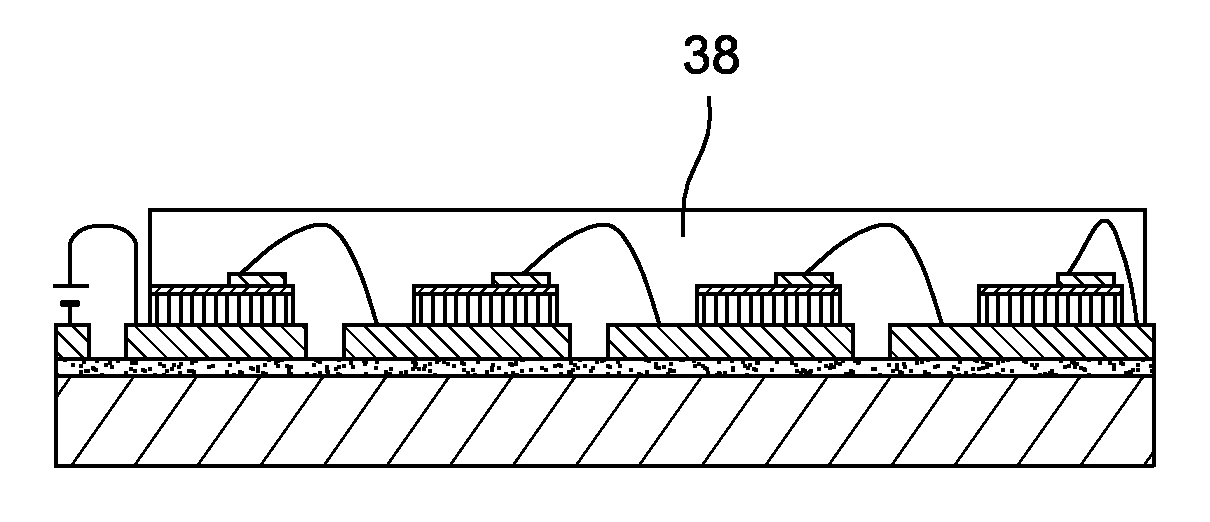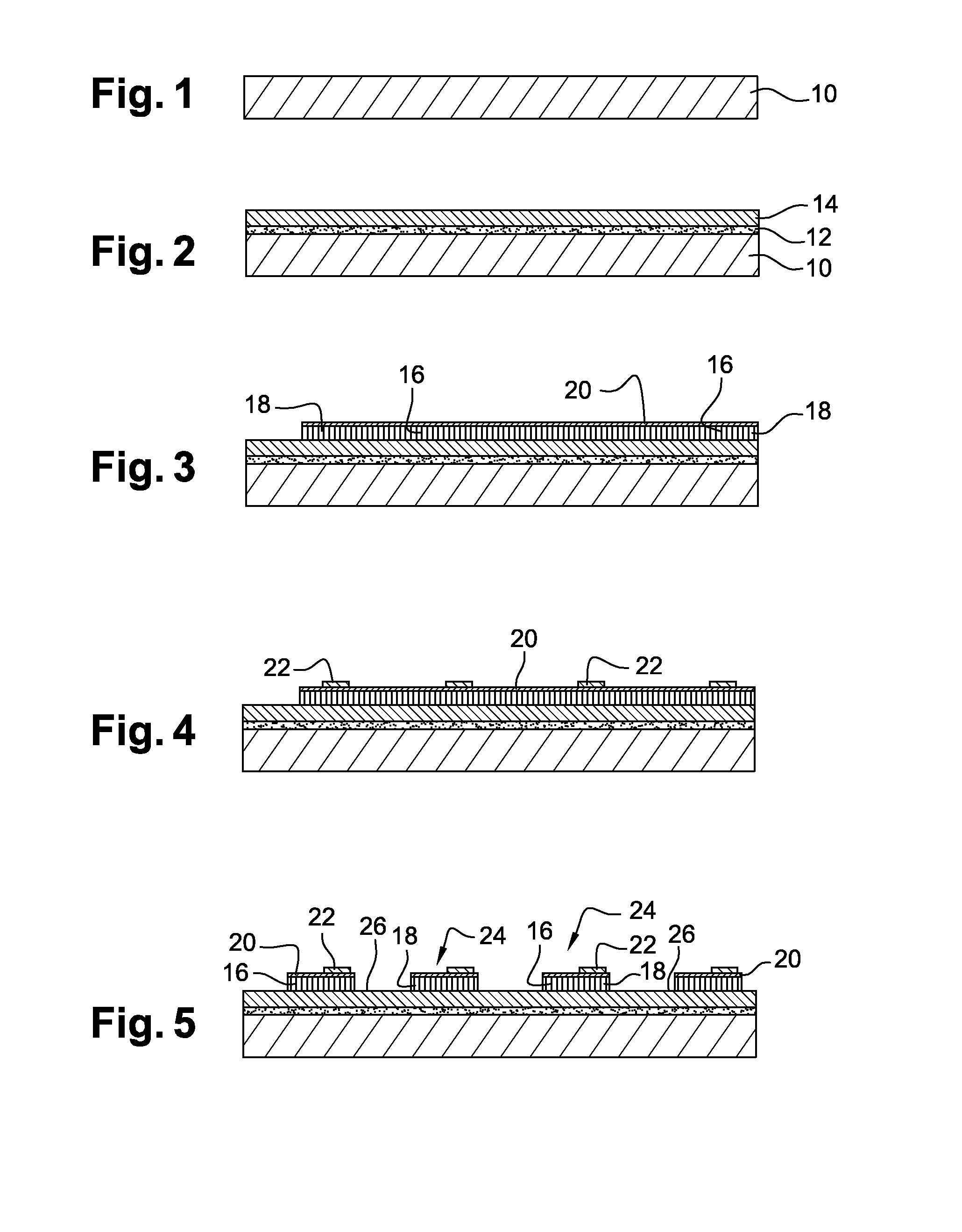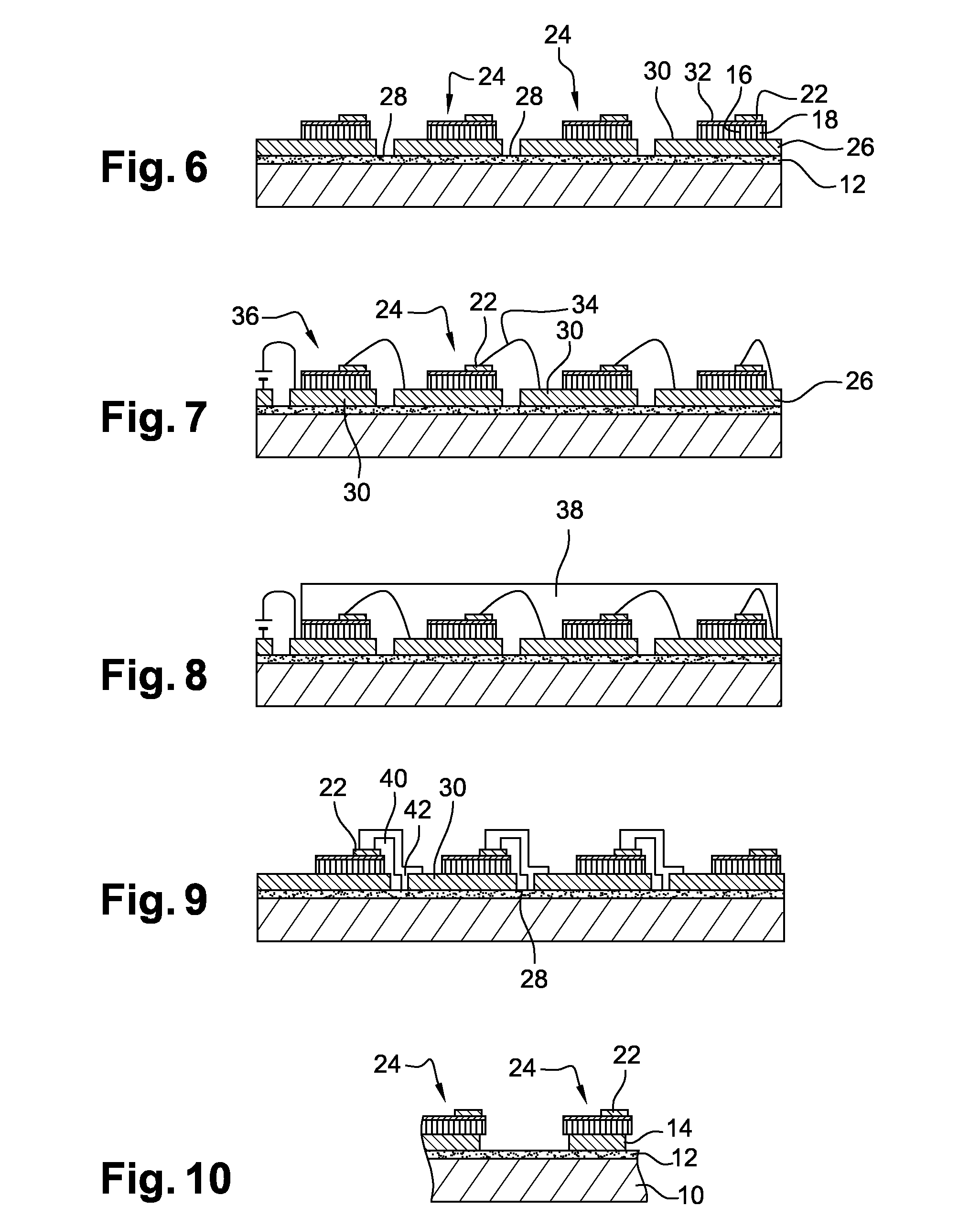Method of manufacturing a light emission device based on light emitting diodes
a technology of light-emitting diodes and manufacturing methods, which is applied in the direction of solid-state devices, basic electric elements, electric devices, etc., can solve the problems of low efficiency of such diodes, reduced service life of leds, and complex manufacturing of leds, etc., to achieve improved heat dissipation characteristics, improved efficiency, and high brightness
- Summary
- Abstract
- Description
- Claims
- Application Information
AI Technical Summary
Benefits of technology
Problems solved by technology
Method used
Image
Examples
Embodiment Construction
[0032]FIGS. 1 to 8 illustrate the main steps of a method of manufacturing an LED-based light emission device in accordance with the invention.
[0033]As illustrated in FIG. 1, the method begins with the formation of a monolithic or multilayer substrate 10. Apart from the function of support for elements constituting the LED-based light emission device, the substrate 10 is chosen so as to present a high thermal conductivity in order to dissipate the heat produced by the LEDs that will subsequently be formed thereon. The substrate 10 preferentially takes the form of a radiator with fins, as will be explained in more detail hereinafter.
[0034]The material or materials which form the substrate 10 are preferably selected from good thermal conductors. For example, the substrate 10 may be composed of one or more metals, or metal alloys, such as copper (Cu), silver (Ag), tungsten (W), aluminium (Al), molybdenum (Mo), nickel (Ni), vanadium (V), palladium (Pd), platinum (Pt), titanium (Ti) and i...
PUM
 Login to View More
Login to View More Abstract
Description
Claims
Application Information
 Login to View More
Login to View More - R&D
- Intellectual Property
- Life Sciences
- Materials
- Tech Scout
- Unparalleled Data Quality
- Higher Quality Content
- 60% Fewer Hallucinations
Browse by: Latest US Patents, China's latest patents, Technical Efficacy Thesaurus, Application Domain, Technology Topic, Popular Technical Reports.
© 2025 PatSnap. All rights reserved.Legal|Privacy policy|Modern Slavery Act Transparency Statement|Sitemap|About US| Contact US: help@patsnap.com



